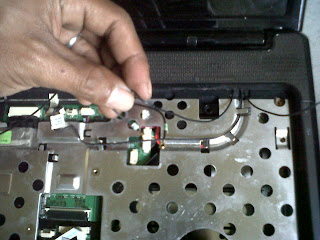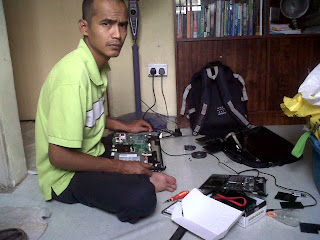Index of the Windows CMD command line
ADDUSERS Add or
list users to/from a CSV file
ADmodcmd Active
Directory Bulk Modify
ARP Address Resolution Protocol
ASSOC Change file extension associations
ASSOCIAT One step
file association
AT Schedule a command to run at a specific
time
ATTRIB Change file attributes
b
BCDBOOT Create or repair a system partition
BCDEDIT Manage Boot Configuration Data
BITSADMIN
Background Intelligent Transfer Service
BOOTCFG Edit Windows boot settings
BROWSTAT Get
domain, browser and PDC info
c
CACLS Change file permissions
CALL Call one batch program from another
CERTREQ Request certificate from a certification
authority
CERTUTIL Utility
for certification authority (CA) files and services
CD Change Directory - move to a specific
Folder
CHANGE Change Terminal Server Session properties
CHKDSK Check Disk - check and repair disk problems
CHKNTFS Check the NTFS file system
CHOICE Accept keyboard input to a batch file
CIPHER Encrypt or Decrypt files/folders
CleanMgr Automated
cleanup of Temp files, recycle bin
CLEARMEM Clear
memory leaks
CLIP Copy STDIN to the Windows clipboard
CLS Clear the screen
CLUSTER Windows Clustering
CMD
Start a new CMD shell
CMDKEY Manage stored usernames/passwords
COLOR Change colors of the CMD window
COMP Compare the contents of two files or sets
of files
COMPACT Compress files or folders on an NTFS
partition
COMPRESS Compress
individual files on an NTFS partition
CON2PRT Connect or disconnect a Printer
CONVERT Convert a FAT drive to NTFS
COPY Copy one or more files to another
location
CSCcmd Client-side caching (Offline Files)
CSVDE Import or Export Active Directory data
d
DATE Display or set the date
DEFRAG Defragment hard drive
DEL Delete one or more files
DELPROF Delete user profiles
DELTREE Delete a folder and all subfolders
DevCon Device Manager Command Line Utility
DIR Display a list of files and folders
DIRUSE Display disk usage
DISKPART Disk
Administration
DISKSHADOW Volume
Shadow Copy Service
DNSSTAT DNS Statistics
DOSKEY Edit command line, recall commands, and
create macros
DriverQuery Display
installed device drivers
DSACLs Active Directory ACLs
DSAdd Add items to active directory (user group
computer)
DSGet View items in active directory (user group
computer)
DSQuery Search for items in active directory (user
group computer)
DSMod Modify items in active directory (user
group computer)
DSMove Move an Active directory Object
DSRM Remove items from Active Directory
e
ECHO Display message on screen
ENDLOCAL End
localisation of environment changes in a batch file
ERASE Delete one or more files
EVENTCREATE Add a
message to the Windows event log
EXIT Quit the current script/routine and set an
errorlevel
EXPAND Uncompress files
EXTRACT Uncompress CAB files
f
FC Compare two files
FIND Search for a text string in a file
FINDSTR Search for strings in files
FOR /F Loop command: against a set of files
FOR /F Loop command: against the results of another
command
FOR Loop command: all options Files,
Directory, List
FORFILES Batch
process multiple files
FORMAT Format a disk
FREEDISK Check free
disk space (in bytes)
FSUTIL File and Volume utilities
FTP File Transfer Protocol
FTYPE File extension file type associations
g
GETMAC Display the Media Access Control (MAC)
address
GLOBAL Display membership of global groups
GOTO Direct a batch program to jump to a
labelled line
GPRESULT Display
Resultant Set of Policy information
GPUPDATE Update
Group Policy settings
h
HELP Online Help
HOSTNAME Display
the host name of the computer
i
iCACLS Change file and folder permissions
IF Conditionally perform a command
IFMEMBER Is the current
user a member of a Workgroup
IPCONFIG Configure
IP
k
KILL Remove a program from memory
l
LABEL Edit a disk label
LOCAL Display membership of local groups
LOGEVENT Write text
to the event viewer
LOGMAN Manage Performance Monitor
LOGOFF Log a user off
LOGTIME Log the date and time in a file
m
MAPISEND Send email
from the command line
MBSAcli Baseline Security Analyzer
MEM Display memory usage
MD Create new folders
MKLINK Create a symbolic link (linkd)
MODE Configure a system device
MORE Display output, one screen at a time
MOUNTVOL Manage a
volume mount point
MOVE Move files from one folder to another
MOVEUSER Move a
user from one domain to another
MSG Send a message
MSIEXEC Microsoft Windows Installer
MSINFO32 System
Information
MSTSC Terminal Server Connection (Remote Desktop
Protocol)
MV Copy in-use files
n
NET Manage network resources
NETDOM
Domain Manager
NETSH Configure Network Interfaces, Windows
Firewall &
Remote access
NETSVC Command-line Service Controller
NBTSTAT Display networking statistics (NetBIOS over
TCP/IP)
NETSTAT Display networking statistics (TCP/IP)
NOW Display the current Date and Time
NSLOOKUP Name
server lookup
NTBACKUP Backup
folders to tape
NTRIGHTS Edit user
account rights
o
OPENFILES Query or
display open files
p
PATH Display or set a search path for executable
files
PATHPING Trace
route plus network latency and packet loss
PAUSE Suspend processing of a batch file and
display a message
PERMS Show permissions for a user
PERFMON Performance Monitor
PING Test a network connection
POPD Return to a previous directory saved by
PUSHD
PORTQRY Display the status of ports and services
POWERCFG Configure
power settings
PRINT Print a text file
PRINTBRM Print
queue Backup/Recovery
PRNCNFG Display, configure or rename a printer
PRNMNGR Add, delete, list printers set the default
printer
PROMPT Change the command prompt
PsExec Execute process remotely
PsFile Show files opened remotely
PsGetSid Display the SID of a computer or a user
PsInfo List information about a system
PsKill Kill processes by name or process ID
PsList List detailed information about processes
PsLoggedOn Who's
logged on (locally or via resource sharing)
PsLogList Event log records
PsPasswd Change account password
PsPing Measure network performance
PsService View and control services
PsShutdown Shutdown
or reboot a computer
PsSuspend Suspend processes
PUSHD Save and then change the current directory
q
QGREP Search file(s) for lines that match a given
pattern
Query Process Display processes (TS/Remote Desktop)
Query Session Display all sessions (TS/Remote Desktop)
Query TermServer
List all servers (TS/Remote Desktop)
Query User Display user sessions (TS/Remote
Desktop)
r
RASDIAL Manage RAS connections
RASPHONE Manage RAS
connections
RECOVER Recover a damaged file from a defective disk
REG Registry: Read, Set, Export, Delete keys
and values
REGEDIT Import or export registry settings
REGSVR32 Register
or unregister a DLL
REGINI Change Registry Permissions
REM Record comments (remarks) in a batch
file
REN Rename a file or files
REPLACE Replace or update one file with another
Reset Session Delete a Remote Desktop Session
RD Delete folder(s)
RMTSHARE Share a
folder or a printer
ROBOCOPY Robust
File and Folder Copy
ROUTE Manipulate network routing tables
RUN Start | RUN commands
RUNAS Execute a program under a different user
account
RUNDLL32 Run a DLL
command (add/remove print connections)
s
SC Service Control
SCHTASKS Schedule a
command to run at a specific time
SCLIST Display Services
SET Display, set, or remove session
environment variables
SETLOCAL Control
the visibility of environment variables
SETX Set environment variables
SFC System File Checker
SHARE List or edit a file share or print share
ShellRunAs Run a
command under a different user account
SHIFT Shift the position of batch file
parameters
SHORTCUT Create a
windows shortcut (.LNK file)
SHOWGRPS List the
Workgroups a user has joined
SHOWMBRS List the
Users who are members of a Workgroup
SHUTDOWN Shutdown
the computer
SLEEP Wait for x seconds
SLMGR Software Licensing Management (Vista/2008)
SOON Schedule a command to run in the near
future
SORT Sort input
START Start a program, command or batch file
SU Switch User
SUBINACL Edit file
and folder Permissions, Ownership and Domain
SUBST Associate a path with a drive letter
SYSTEMINFO List
system configuration
t
TAKEOWN Take ownership of a file
TASKLIST List
running applications and services
TASKKILL Remove a
running process from memory
TIME Display or set the system time
TIMEOUT Delay processing of a batch file
TITLE Set the window title for a CMD.EXE session
TLIST Task
list with full path
TOUCH Change file timestamps
TRACERT Trace route to a remote host
TREE Graphical display of folder structure
TSDISCON Disconnect
a Remote Desktop Session
TSSHUTDN Remotely
shut down or reboot a terminal server
TYPE Display the contents of a text file
TypePerf Write
performance data to a log file
u
USRSTAT List domain usernames and last login
v
VER Display version information
VERIFY Verify that files have been saved
VOL Display a disk label
w
WAITFOR Wait for or send a signal
WEVTUTIL Clear
event logs, enable/disable/query logs
WHERE Locate and display files in a directory
tree
WHOAMI Output the current UserName and domain
WINDIFF Compare the contents of two files or sets of
files
WINMSDP Windows system report
WINRM Windows Remote Management
WINRS Windows Remote Shell
WMIC WMI Commands
WUAUCLT Windows Update
x
XCACLS Change file and folder permissions
XCOPY Copy files and folders

























